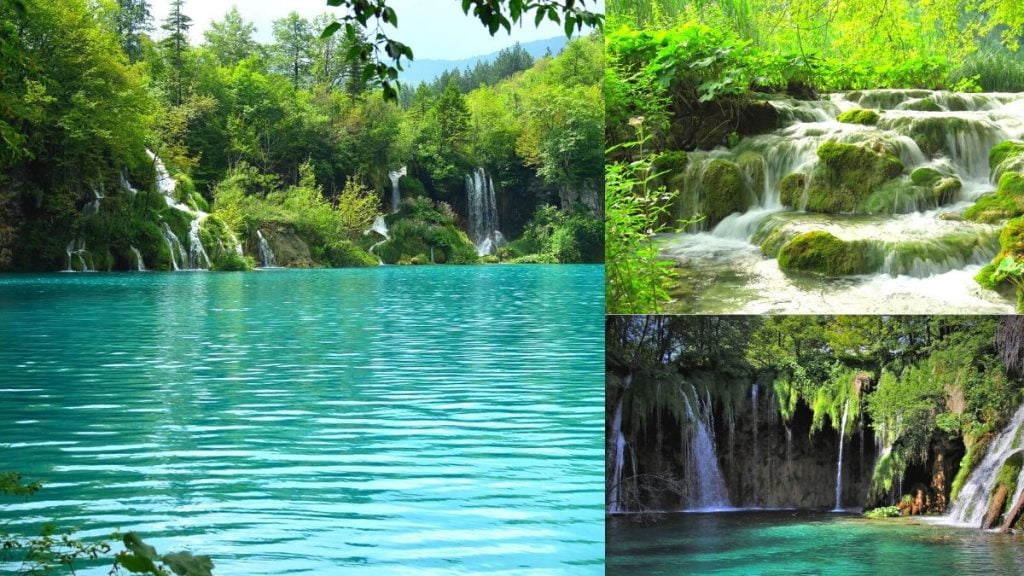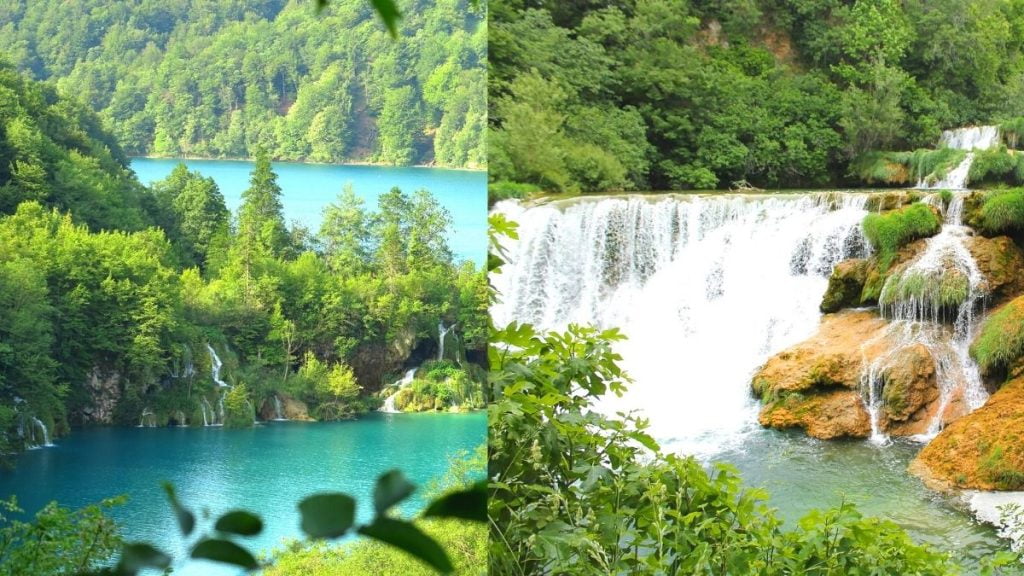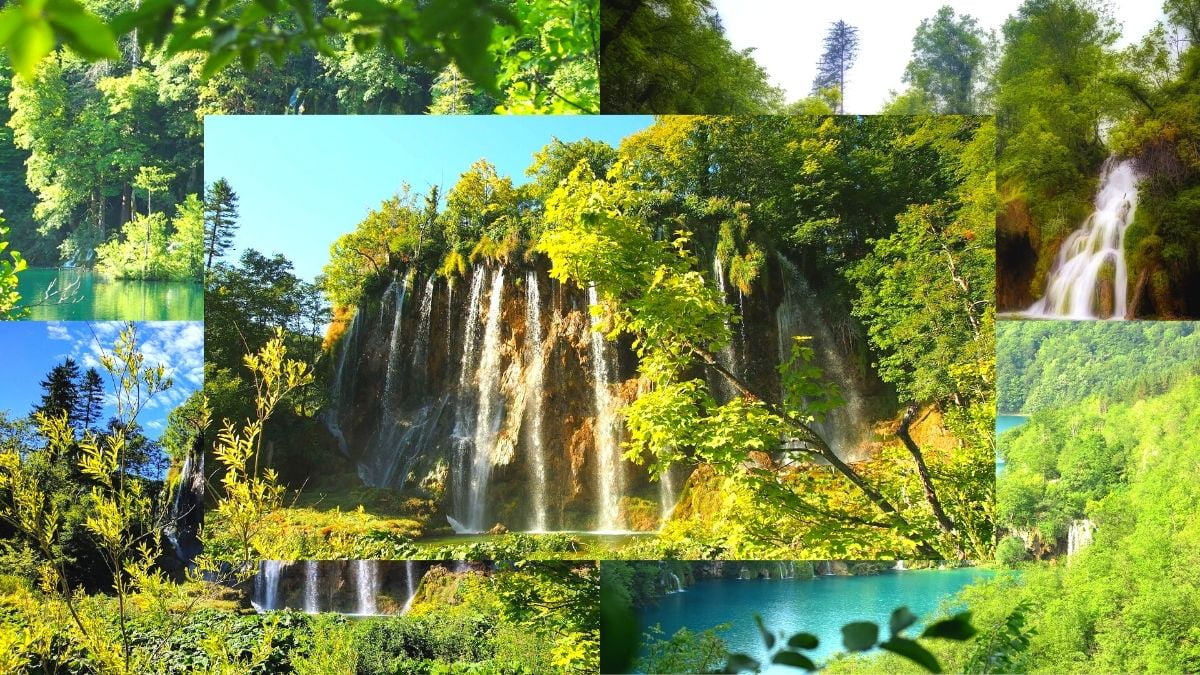The Plitvice Lakes National Park is indeed the Republic of Croatia’s oldest and largest national park, popular for its innumerable turquoise-colored lakes separated by tufa, or travertine, barriers. In 1979, the Plitvice Lakes National Park, Croatia’s most popular tourist attraction, was designated a UNESCO World Heritage Site. Because of its magnificent and picturesque series of tufa lakes, caves, and waterfalls. The Plitvice Lakes National Park is karst landscape is distinguished by distinct hydrological characteristics and exceptional biological diversity, which has helped the National Park achieve international recognition.
Where is Plitvice Lakes National Park located?
Do you know where Plitvice Lakes National Park located is? The Plitvice Lakes National Park is around halfway between Zagreb, Croatia’s capital, and Zadar, on the coast. The lakes are a must-see in Croatia. Based around with a collection of 16 lakes in Croatia that are all linked and cascade into one another, ranging in elevation from 636 meters to 503 meters, they are divided into two groups: There are a total of twelve Upper Lakes and four Lower Lakes.

Establishment of Plitvice Lakes National Park, Croatia
The national national park was established in 1949 and is located near the Bosnian-Herzegovina border in central Croatia’s rocky karst region. The key north–south road that runs through the park area connects the Croatian inland with the Adriatic coast.
The nature reserve covers a total area of 296.85 square kilometers (73,350 acres). Lika-Senj County covers approximately 90% of this territory, while Karlovac County covers the remaining 10%.
More than one million visitors are registered each year. In summer 2018, entrance fees range from 250 kuna (about €34) per adult per day.
Plitvice Lakes National Park’s Outstanding Universal Value
Plitvice Lakes National Park, Croatia’s biggest national park with about 30,000 hectares is located in the Dinarides’ lower altitudes in the country’s central region. The lakes are divided into upper and lower lakes, which are connected by numerous waterfalls and watercourses above and below ground. The earlier are developed on dolomites, with mild relief, not steep coasts, and thick forests surrounding them, whereas the latter are smaller and shallower limestone canyons with somewhat steep shores. The majestic Plitvice lake system stands out in a picturesque karst terrain dominated by a mix of forests and meadows, captivating scientists and visitors alike.
The lake chain is the product of millennia of geological and biological processes that have created tufa barriers, which are natural dams. These are generated by the calcium carbonate deposition from the property’s flowing waters. This geochemical process of tufa production interacts with living creatures in the Plitvice lake system, most notably mosses, algae, and aquatic bacteria. The whole lake system’s magnitude, as well as the natural boundaries, is an excellent embodiment of the aesthetically striking phenomena that has been recognized since the late 1800s.
The park is home to notable biodiversity, in addition to outstanding landscape beauty and processes which continue to change the lakes. The tufa barriers themselves provide habitat for a wide variety of non-vascular plant populations. The forests are home to Brown Bear, Grey Wolf, and Lynx, as well as many uncommon species, while the meadows are recognized for their diverse vegetation.

Plitvice Lakes National Park Hotels
Staying immediately next to the Park is feasible at one of its three hotels, which are all crowded quite closely together by second entrance, or at Camp Korana, which has bungalows or space for 500 camping units and is around 7km from first entrance. Second entrance is 15 kilometers away from another campsite, Camp Borje. The Hotel Grabovac, which is also 12 kilometers north of the Park, is another option.
In the region, there are also a large number of private housing rooms, apartments in guesthouses, and other similar options. There are several options near the park entrances, but there is also plenty of variety in a number of towns and villages along the approach to the park. If you don’t have a car, make sure you choose a hotel that is within walking distance of the Park.
What is the best time of year to visit Plitvice Lakes National Park?
Plitvice Lakes isn’t only a summer destination. It’s a beautiful site to come at any time of year because the Park changes color with the seasons, whether it’s lush vegetation in the spring/summer, rich colors in the fall or spectacular landscapes in the snow and ice in the winter.
Even if it’s raining, the park is still worth visiting because the water creates a dramatic appearance — occasionally bubbling up beneath your feet on the wooden walks!
Plitvice is understandably popular during the summer, and the paths can be very congested. We recommend visiting in the spring or late summer when the weather is still pleasant, the park is open for a longer period of time, and there are fewer visitors.

